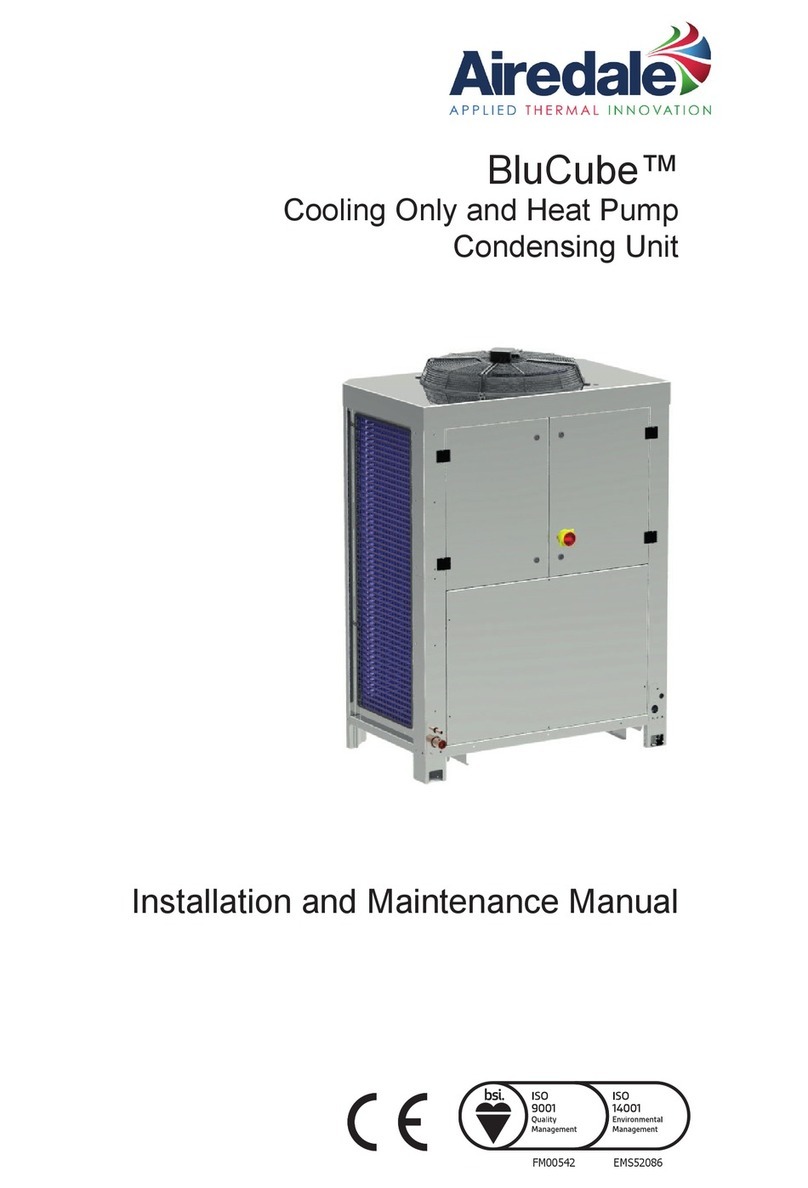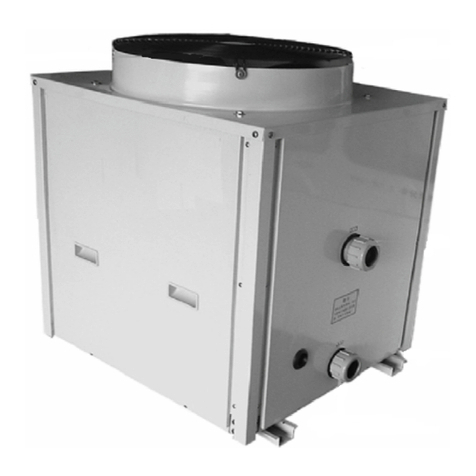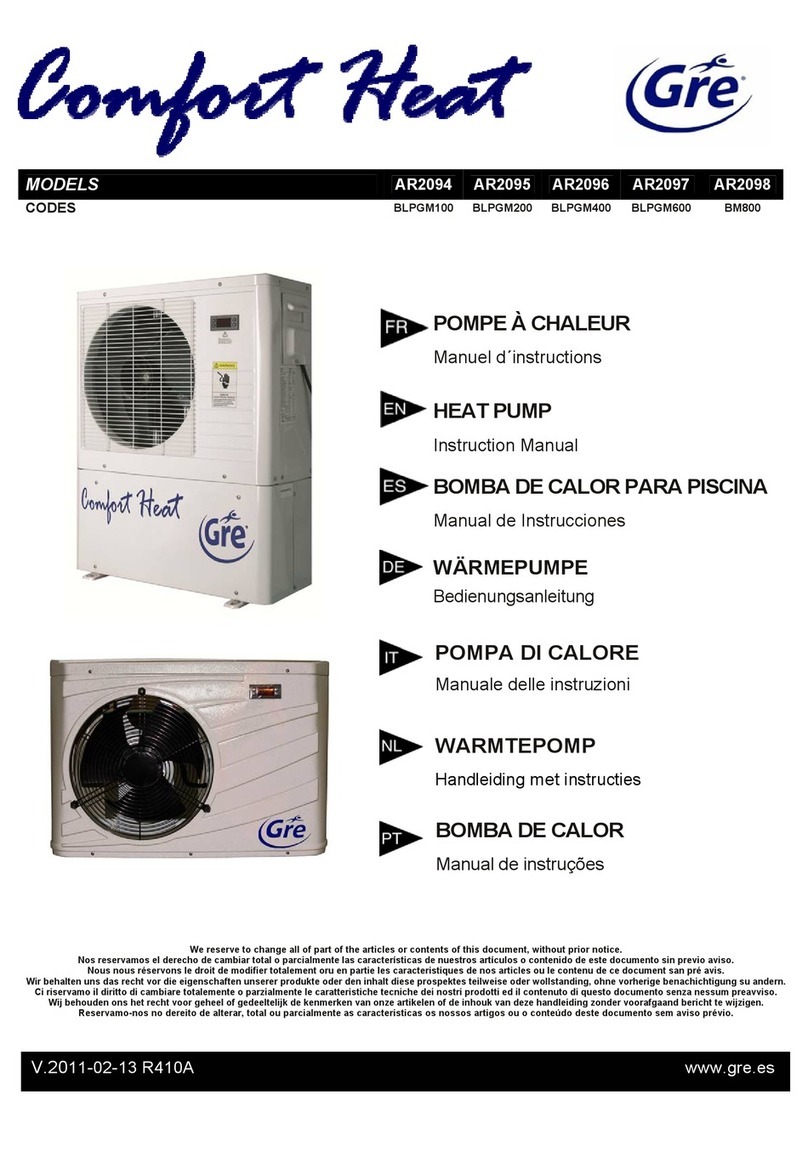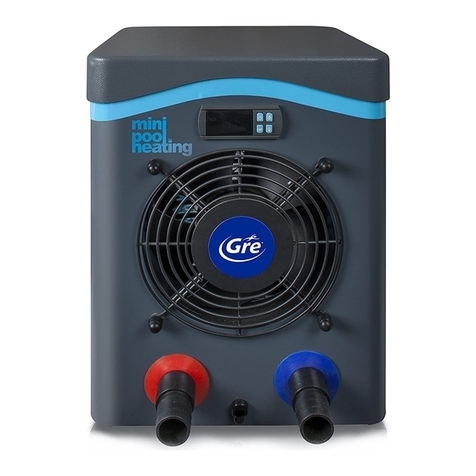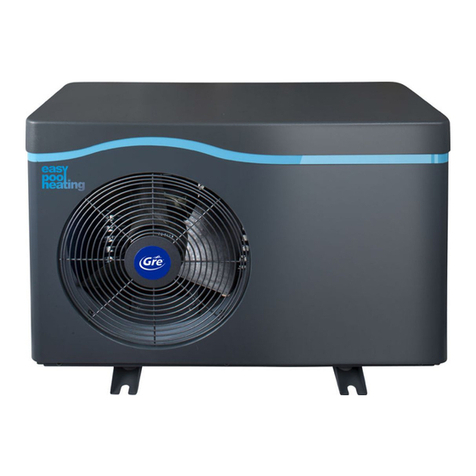12. Restarting the pump after winter
If you emptied the heat pump for winterising, follow the steps below to restart it in spring:
1. First check that there is no dirt in the conduits and that there are no structural problems.
2. Check that the water inlet and outlet fittings are adequately fastened. Check that ''water inlet''
and ''water outlet'' are correct according to the labels on the heat pump (water out from the
filter unit = water inlet on heat pump)
3. Start the filter pump to start the water flow to the heat pump. Adjust the by-pass so there is
enough water running through the heat pump. Normally on a small filter system the by-pass
can be closed, so all circulated water goes through the heat pump.
4. Reconnect the electrical power supply to the heat pump and turn the heat pump ON.
13. Check-up
Our heat pumps have been built and developed to last long if they have been installed correctly and
can operate in normal conditions. Regular check-ups are important if you want your heat pump to
function efficiently for many years. Below are some recommendations to ensure optimal working
conditions for your heat pump.
1). Make sure that the service panel is easily accessible.
2). Keep the area surrounding the heat pump free of organic waste.
3). Prune any vegetation around the heat pump so that there is sufficient free space around the
pump.
4). Remove any water sprinklers that are near the heat pump as they could cause damage to it.
5). Prevent rain from running directly onto the heat pump from a roof. Install proper drainage.
6). Do not use the heat pump if it has been flooded. Immediately contact a qualified technician to
inspect the heat pump and carry out necessary repair.
Condensation can occur when the heat pump is running. This condensation water can flow away
through an opening in the base pan of the unit. The amount of condensation water will increase
when humidity is high. Remove any dirt that could block the water outlet on the bottom pan. 5 to 20
liters per day of condensation water can be produced while the unit is running. If more condensation
is produced, stop the heat pump and wait for one hour before checking for water leakage (keep the
filter pump running).
Note: a quick way to verify that the water running is because of the condensation. Shut off
the unit and keep the pool pump running. If the water stops running out, it is condensation.
AN EVEN QUICKER WAY IS TO TEST THE DRAIN WATER FOR CHLORINE. If no chlorine is
detected, the drain water is a result of condensation.
Also make sure that the air in and out passages are free, and prevent air out from immediately re-
entering to the air in. (It is important to have min. 2.5m free space at the air out side of the heat
pump).
- 8 -

